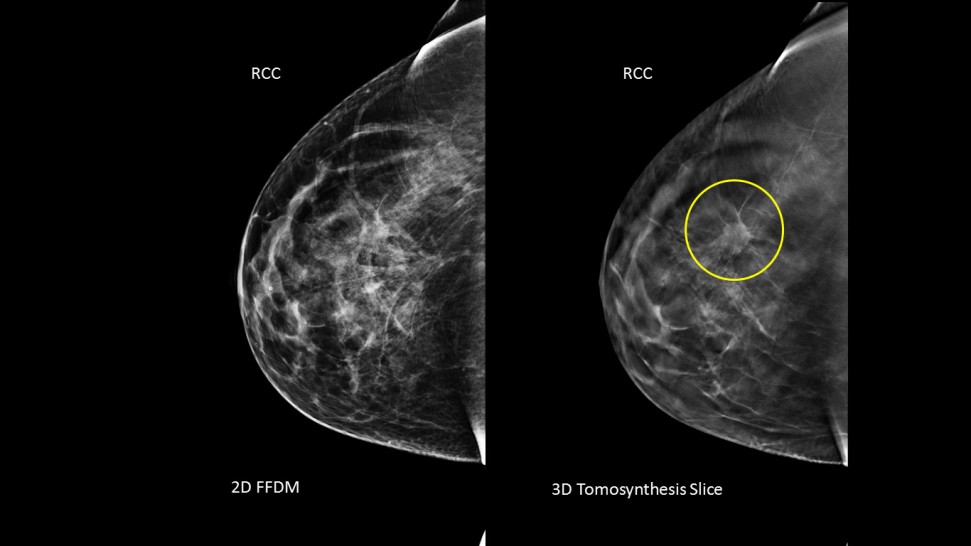February 16, 2015 - Tomosynthesis had lower recall rates than conventional screening mammography, according to results from the recently published study Early clinical experience with digital breast tomosynthesis for screening mammography.1
The study was designed to examine recall rates from screening mammography and the mammographic findings that caused recall in women who underwent digital breast tomosynthesis with conventional mammography (called two-dimensional [2D] with three-dimensional [3D] imaging) and in women who underwent conventional mammography alone (referred to as 2D two-dimensional).
Of the 17,955 patients with screening mammograms, 8,591 (47.8%) underwent 2D + 3D screening examinations and 9,364 (52.2%) 2D examinations alone. The recall rate was 7.8% for patients who underwent 2D + 3D examinations and 12.3% (1154 of 9364) for patient who received 2D exams alone. The rate of recall was 36.6% lower in the 2D + 3D group than in the 2D group. Recall rates for the 2D + 3D group were significantly lower for patients with asymmetries and calcifications. The study also found that c
The authors concluded that the use of tomosynthesis (2D + 3D) compared with conventional mammography (2D) is associated with a lower recall rate of screening mammography, most often for asymmetries.

Breast Cancer Screening Using Tomosynthesis in Combination with Digital Mammography. JAMA. June 25, 2014
SOURCE Hologic, Inc.
Source: 1. Durand MA, Haas BM, Yao X, et al. Early clinical experience with digital breast tomosynthesis for screening mammography. Radiology. 2015 Jan;274(1):85-92. doi: 10.1148/radiol.14131319. Epub 2014 Sep 1.




